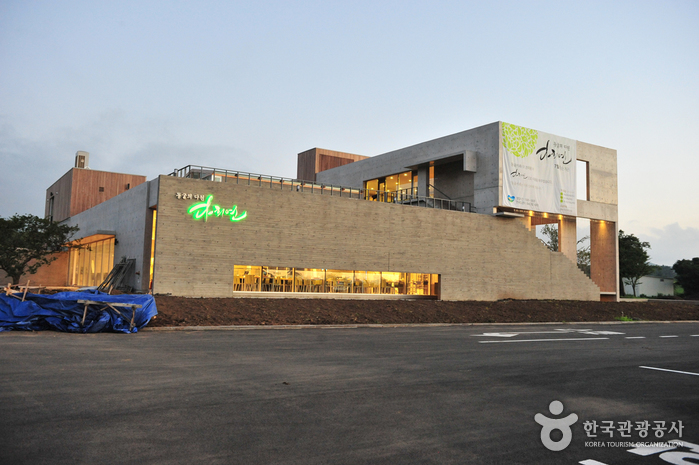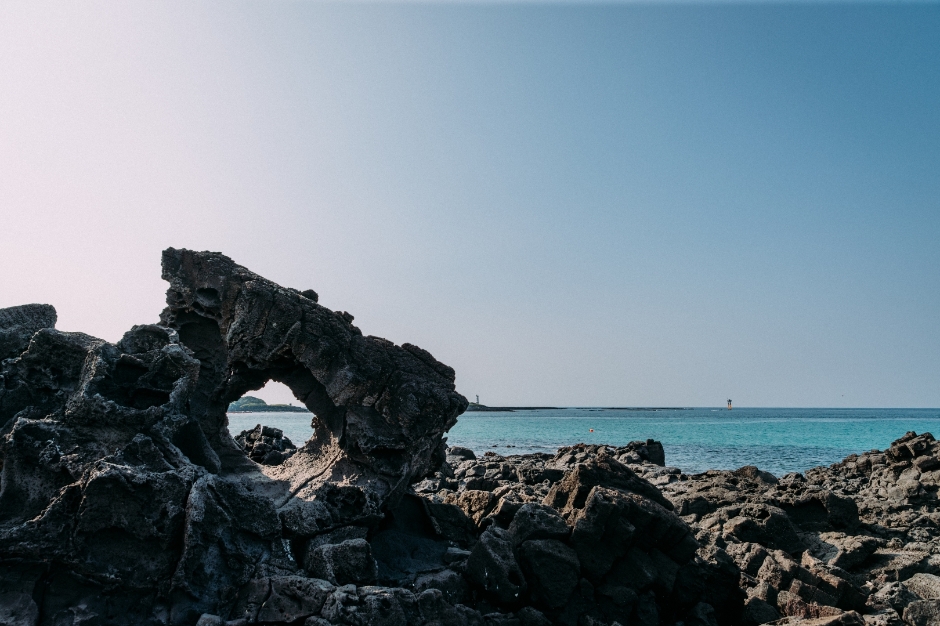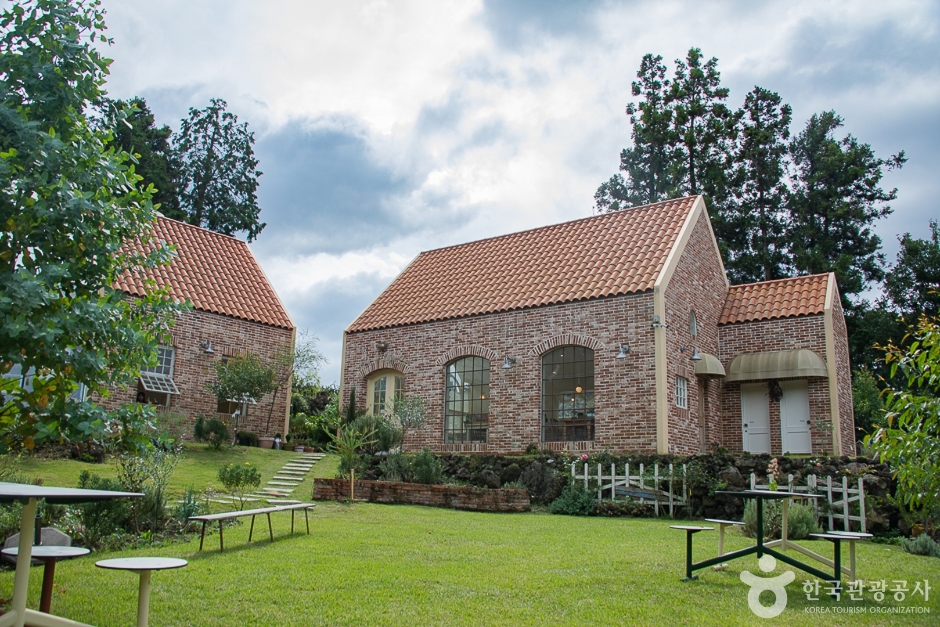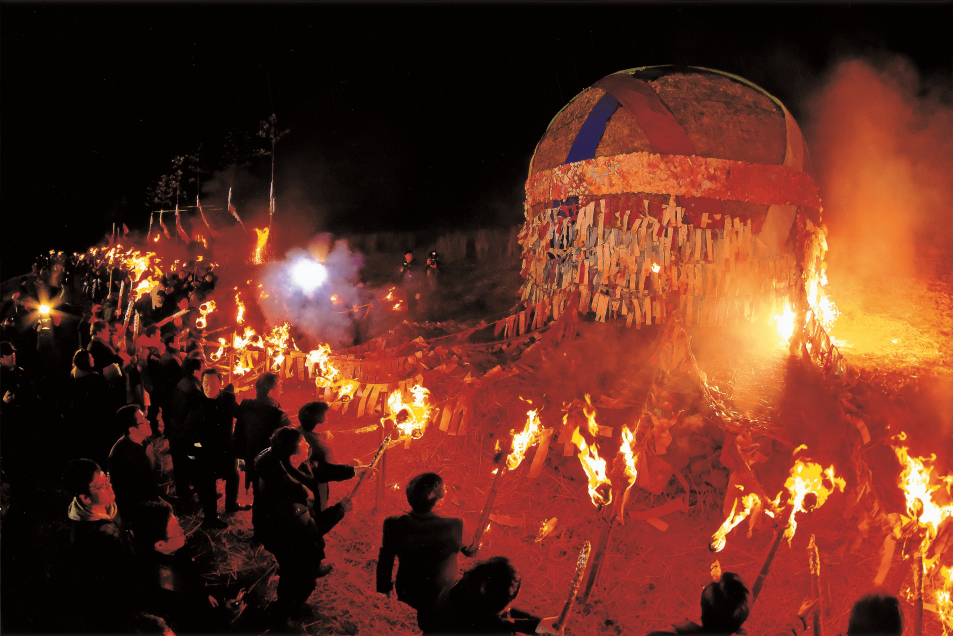Daheeyeon Garden (다희연)
18.8Km 29665 2019-12-20
117, Seongyo-ro, Jeju-si, Jeju-do
+82-64-782-0005
Daheeyeon Garden is a major tea farm on Jeju Island, which has the best conditions for growing great tea in a natural environment. Jeju has a year-round average temerature of 16℃ and nutrient-rich soil with plenty of water for the tea plants to grow well. The two cave cafes, Evergreen Luce Garden and Eve Hall, serve naturally fermented green tea bread, cookies, muffins, green tea latte and green tea juice.
Evergreen Luce outdoor garden was built inside a cave formed naturally by a volcanic eruption. Despite being in a cave, this outdoor garden has ponds, bridges, indigenous trees and flowers. Eve Hall is located through a hole in the cave ceiling and can be only reached after passing through a tunnel-like cave. The deepest part of Eve Hall is roughly 30 meters and is home to bats; if you are lucky, you might even see a few.
Changkkom (창꼼)
18.9Km 0 2024-09-19
15 Bukchon 15-gil, Jocheon-eup, Jeju-si, Jeju-do
Changkkom is a unique rock formation with a window-shaped hole, popular among tourists for taking photos.
Jas de Bouffan (자드부팡)
19.1Km 0 2024-02-20
385-216 Bukheul-ro, Jocheon-eup, Jeju-si, Jeju-do
Café Jas de Bouffan is nestled within Dongbaek-Dongsan forest, featuring a European-style building that, along with the surrounding forest, creates stunning scenery. The signature item on the menu is the coconut cream latte. Guests can savor a range of desserts and drinks amidst the café's exotic atmosphere. Nearby attractions such as Gimnyeong Beach, Bijarim Forest, and Manjanggul Lava Tube enhance the appeal of visiting this unique spot.
Sangumburi Crater (산굼부리)
19.3Km 97273 2023-01-17
768, Bijarim-ro, Jeju-si, Jeju-do
+82-64-783-9900
Sangumburi Crater has been designated as a Natural Monument. It is located on the southeast side of Jeju, and is a flat crater, about 650 meters wide, 100 meters deep, and 2,070 meters in circumference. If you look at the crater from above up, it looks like a man-made circular stadium. There is a variety of plant-life in the crater. On the north side, Nandaeseong vegetation such as red-thorn trees, and magnolia trees grow, along with the rare winter strawberries. On the south side of the crater, Ondaerim vegetation such as evergreens, maples, and mountain strawberry trees cover the area. Because so many different kinds of trees and plants grow in such a limited space, it attracts the attention of researchers as well.
Jeju Fire Festival (제주들불축제)
19.6Km 74216 2023-04-23
San 59-8, Bongseong-ri, Jeju-si, Jeju-do
• 1330 Korea Travel Hotline: +82-2-1330 (Korean, English, Japanese, Chinese) • For more info: +82-64-728-2736
Jeju Fire Festival is a representative cultural festival related to Jeju's culture of livestock care. Held every March at Saebyeoloreum Volcanic Cone, the night sky lights up with fiery red. The festival features a media façade show, torch march, fire show, and more as well as various programs and food trucks.
Saebyeol Oreum (새별오름)
19.7Km 20079 2023-01-16
San, Bongseong-ri, Jeju-si, Jeju-do
+82-64-740-6000
Located in Bongseong-ri, Aewol-eup, Jeju-si, Saebyeol Oreum (called Hyoseongak) is a parasitic volcano cone set alone that looks like a lonely star (Saetbyeol in Korean) in the night sky, giving this volcano cone its name. Based on the highest south peak, small peaks continue in the northwest direction, forming an oval-shape. The oreum is a mid-sized oreum among 360 oreums on Jeju Island and it features a stunning view from the peak of the beautiful ridges connecting to one another.
Saryeoni Forest Trail (사려니숲길)
19.7Km 10193 2023-01-16
Entrance of Bulgeun Oreum, Gasi-ri, Seogwipo-si, Jeju-do
+82-64-900-8800
Saryeoni Forest Trail cuts through the dense Japanese cedar forest growing between Mulchat Oreum and Saryeoni Oreum, starting from the entrance on Regional Road 1112. While the vast majority of the trees growing here are Japanese cedar, visitors can also see Japanese oak, birch, snowbell trees, and cypress trees along this 550-meter-long trail. The forest trail is known as one of Jeju's top 31 hidden attractions, and is well-known as being very protected. It is very popular among tourists who enjoy hiking and the outdoors.





 English
English
 한국어
한국어 日本語
日本語 中文(简体)
中文(简体) Deutsch
Deutsch Français
Français Español
Español Русский
Русский